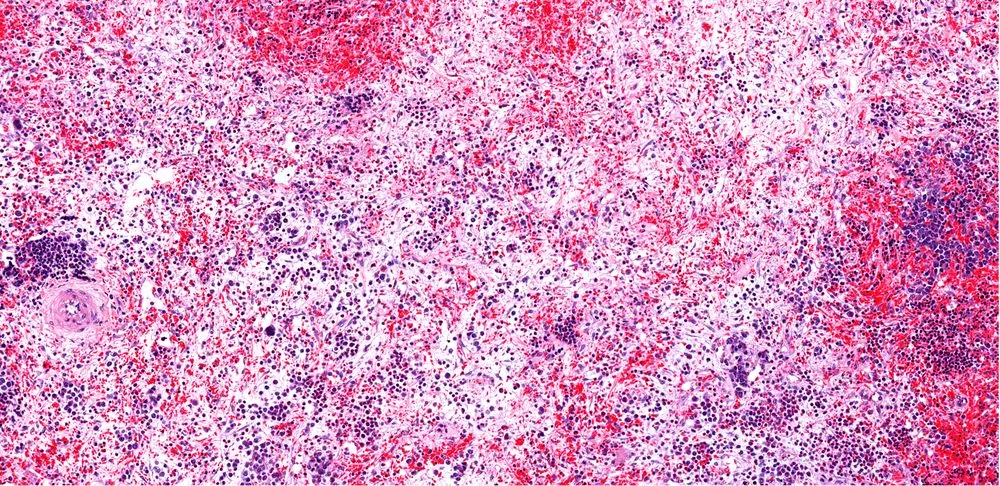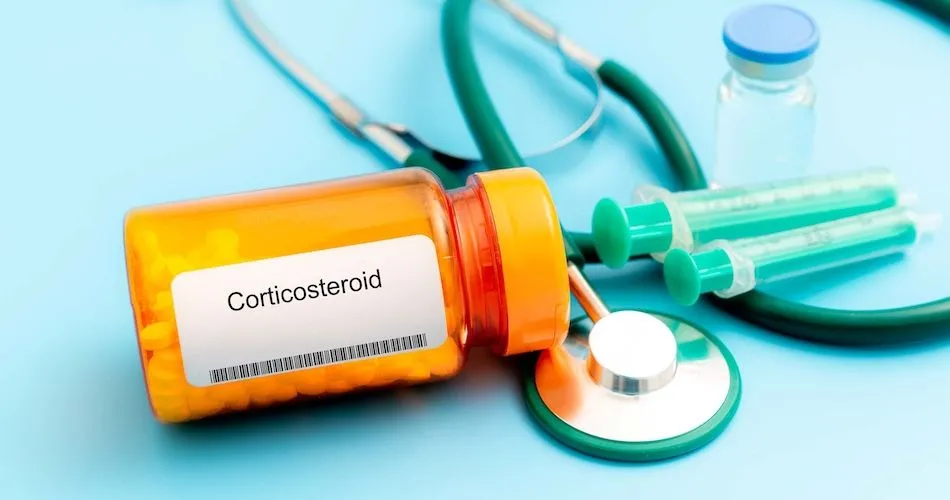Understanding Bone Marrow Fibrosis in Myelodysplastic Syndromes

What is Bone Marrow Fibrosis?
Bone marrow fibrosis happens when scar-like tissue builds up in your bone marrow. This makes it hard for your bone marrow to make blood cells like it should. People diagnosed with myelodysplastic syndrome (MDS) can sometimes develop bone marrow fibrosis, too. This is called MDS with bone marrow fibrosis or MDS-f.
How Common is MDS-f?
Since 2022, the World Health Organization (WHO) Classification of Haematolymphoid Tumours recognizes MDS with bone marrow fibrosis (MDS-f) as a specific subclass of MDS. MDS-f affects about 10-20% of people with MDS.
It's diagnosed through a bone marrow biopsy, which helps doctors see how much fibrosis is there, and they grade it from 0–3 depending on the severity of the fibrosis.
How is MDS-f treated?
The treatments for MDS-f are generally the same as those for MDS without fibrosis. These can include:
- Supportive care, which can include things like transfusions or any procedure to manage your symptoms and help you feel better
- Immunomodulatory agents: a type of therapies that interact with your immune system to make it work better
- Hypomethylating agents that can reduce the amount of cancer cells so the bone marrow can go back to producing normal blood cells
- Chemotherapy, to control the growth of MDS cells
- Allogeneic hematopoietic stem cell transplantation
It's important to know that even if the MDS treatments work well, they might not reduce the level of bone marrow fibrosis. A successful stem cell transplant, however, can often improve the fibrosis. This is why doing a bone marrow biopsy and assessing if you have any signs of fibrosis could help with the treatment decision.
How Does Bone Marrow Fibrosis Affect Prognosis?
Having fibrosis along with MDS can sometimes mean a more challenging course of the disease. It can be linked to a shorter lifespan and a higher chance of developing acute myeloid leukemia (AML). Other factors, like your age, whether you have anemia, specific genetic changes (like a TP53 mutation), and the number of immature blood cells (blasts), can also affect your outlook or prognosis.
What's the Difference Between MDS-f and Myelofibrosis?
Both MDS-f and primary myelofibrosis involve fibrosis in the bone marrow, but they are different diseases. Myelofibrosis is a type of myeloproliferative neoplasm (MPN) where the bone marrow makes too many abnormal blood cells, which leads to scarring.
It can be difficult for healthcare professionals to distinguish between primary myelofibrosis and MDS-f; however, there are typically some key differences:
- Specific genetic changes: JAK2, CALR, and MPL mutations are present in 90% of patients with primary myelofibrosis but only in 5–10% of patients with MDS-f
- Enlarged spleen: A characteristic sign of primary myelofibrosis
- Certain cell types and cell sizes present in your bone marrow
Key Points to Remember:
- Bone marrow fibrosis refers to the build-up of scar-like tissue in the bone marrow
- Around 10–20% of patients with MDS can develop bone marrow fibrosis, referred to as MDS-f
- MDS-f and myelofibrosis are different conditions, even though they both involve bone marrow fibrosis
Continue learning about myelodysplastic syndrome symptoms, treatment, and complications. Sign up for our newsletter to receive updates, register to upcoming free webinars for patients and their families, and more!
Sources:
- Myelodysplastic Syndromes with Bone Marrow Fibrosis: An Update
- The 5th edition of the World Health Organization Classification of Haematolymphoid Tumours: Myeloid and Histiocytic/Dendritic Neoplasms
- Bone Marrow Fibrosis at Diagnosis and during the Course of Disease Is Associated with TP53 Mutations and Adverse Prognosis in Primary Myelodysplastic Syndrome
- How I Diagnose Primary Myelofibrosis
- Myelofibrosis (MF)
What is Bone Marrow Fibrosis?
Bone marrow fibrosis happens when scar-like tissue builds up in your bone marrow. This makes it hard for your bone marrow to make blood cells like it should. People diagnosed with myelodysplastic syndrome (MDS) can sometimes develop bone marrow fibrosis, too. This is called MDS with bone marrow fibrosis or MDS-f.
How Common is MDS-f?
Since 2022, the World Health Organization (WHO) Classification of Haematolymphoid Tumours recognizes MDS with bone marrow fibrosis (MDS-f) as a specific subclass of MDS. MDS-f affects about 10-20% of people with MDS.
It's diagnosed through a bone marrow biopsy, which helps doctors see how much fibrosis is there, and they grade it from 0–3 depending on the severity of the fibrosis.
How is MDS-f treated?
The treatments for MDS-f are generally the same as those for MDS without fibrosis. These can include:
- Supportive care, which can include things like transfusions or any procedure to manage your symptoms and help you feel better
- Immunomodulatory agents: a type of therapies that interact with your immune system to make it work better
- Hypomethylating agents that can reduce the amount of cancer cells so the bone marrow can go back to producing normal blood cells
- Chemotherapy, to control the growth of MDS cells
- Allogeneic hematopoietic stem cell transplantation
It's important to know that even if the MDS treatments work well, they might not reduce the level of bone marrow fibrosis. A successful stem cell transplant, however, can often improve the fibrosis. This is why doing a bone marrow biopsy and assessing if you have any signs of fibrosis could help with the treatment decision.
How Does Bone Marrow Fibrosis Affect Prognosis?
Having fibrosis along with MDS can sometimes mean a more challenging course of the disease. It can be linked to a shorter lifespan and a higher chance of developing acute myeloid leukemia (AML). Other factors, like your age, whether you have anemia, specific genetic changes (like a TP53 mutation), and the number of immature blood cells (blasts), can also affect your outlook or prognosis.
What's the Difference Between MDS-f and Myelofibrosis?
Both MDS-f and primary myelofibrosis involve fibrosis in the bone marrow, but they are different diseases. Myelofibrosis is a type of myeloproliferative neoplasm (MPN) where the bone marrow makes too many abnormal blood cells, which leads to scarring.
It can be difficult for healthcare professionals to distinguish between primary myelofibrosis and MDS-f; however, there are typically some key differences:
- Specific genetic changes: JAK2, CALR, and MPL mutations are present in 90% of patients with primary myelofibrosis but only in 5–10% of patients with MDS-f
- Enlarged spleen: A characteristic sign of primary myelofibrosis
- Certain cell types and cell sizes present in your bone marrow
Key Points to Remember:
- Bone marrow fibrosis refers to the build-up of scar-like tissue in the bone marrow
- Around 10–20% of patients with MDS can develop bone marrow fibrosis, referred to as MDS-f
- MDS-f and myelofibrosis are different conditions, even though they both involve bone marrow fibrosis
Continue learning about myelodysplastic syndrome symptoms, treatment, and complications. Sign up for our newsletter to receive updates, register to upcoming free webinars for patients and their families, and more!
Sources:
- Myelodysplastic Syndromes with Bone Marrow Fibrosis: An Update
- The 5th edition of the World Health Organization Classification of Haematolymphoid Tumours: Myeloid and Histiocytic/Dendritic Neoplasms
- Bone Marrow Fibrosis at Diagnosis and during the Course of Disease Is Associated with TP53 Mutations and Adverse Prognosis in Primary Myelodysplastic Syndrome
- How I Diagnose Primary Myelofibrosis
- Myelofibrosis (MF)

about the author
Dylan Barrett
Dylan is a freelance medical writer based in Cork, Ireland. He previously worked in independent medical education while living in London and is now collaborating with HealthTree to develop resources for blood cancer patients. His background is in genetics, and he has a passion for innovative scientific research. In his spare time, he enjoys sports, traveling, and spending time with his family and friends.
More on Core Education
Trending Articles
Get the Latest Myelodysplastic Syndromes Updates, Delivered to You.
By subscribing to the HealthTree newsletter, you'll receive the latest research, treatment updates, and expert insights to help you navigate your health.
Together we care.
Together we cure.
3x Faster.









